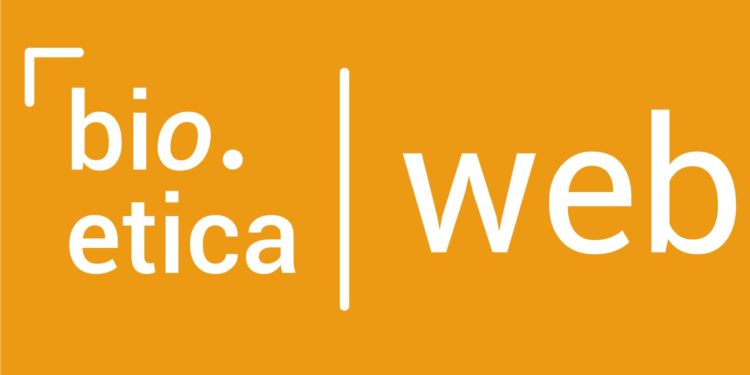An Act to make provision in connection with human embryos and any subsequent development of such embryos; to prohibit certain practices in connection with embryos and gametes; to establish a Human Fertilisation and Embryology Authority; to make provision about the persons who in certain circumstances are to be treated in law as the parents of a child; and to amend the Surrogacy Arrangements Act 1985.
Human Fertilisation and Embryology Act 1990 (c. 37)
1990 CHAPTER 37
ARRANGEMENT OF SECTIONS
An Act to make provision in connection with human embryos and any subsequent development of such embryos; to prohibit certain practices in connection with embryos and gametes; to establish a Human Fertilisation and Embryology Authority; to make provision about the persons who in certain circumstances are to be treated in law as the parents of a child; and to amend the Surrogacy Arrangements Act 1985.
[1st November 1990]
Be it enacted by the Queen’s most Excellent Majesty, by and with the advice and consent of the Lords Spiritual and Temporal, and Commons, in this present Parliament assembled, and by the authority of the same, as follows:—
Principal terms used
1 Meaning of “embryo”, “gamete” and associated expressions
(1) In this Act, except where otherwise stated—
(a) embryo means a live human embryo where fertilisation is complete, and
(b) references to an embryo include an egg in the process of fertilisation,
and, for this purpose, fertilisation is not complete until the appearance of a two cell zygote.
(2) This Act, so far as it governs bringing about the creation of an embryo, applies only to bringing about the creation of an embryo outside the human body; and in this Act—
(a) references to embryos the creation of which was brought about in vitro (in their application to those where fertilisation is complete) are to those where fertilisation began outside the human body whether or not it was completed there, and
(b) references to embryos taken from a woman do not include embryos whose creation was brought about in vitro.
(3) This Act, so far as it governs the keeping or use of an embryo, applies only to keeping or using an embryo outside the human body.
(4) References in this Act to gametes, eggs or sperm, except where otherwise stated, are to live human gametes, eggs or sperm but references below in this Act to gametes or eggs do not include eggs in the process of fertilisation.
2 Other terms
(1) In this Act—
-
“the Authority” means the Human Fertilisation and Embryology Authority established under section 5 of this Act,
-
“directions” means directions under section 23 of this Act,
-
“licence” means a licence under Schedule 2 to this Act and, in relation to a licence, “the person responsible” has the meaning given by section 17 of this Act, and
-
“treatment services” means medical, surgical or obstetric services provided to the public or a section of the public for the purpose of assisting women to carry children.
(2) References in this Act to keeping, in relation to embryos or gametes, include keeping while preserved, whether preserved by cryopreservation or in any other way; and embryos or gametes so kept are referred to in this Act as “stored” (and “store” and “storage” are to be interpreted accordingly).
(3) For the purposes of this Act, a woman is not to be treated as carrying a child until the embryo has become implanted.
Activities governed by the Act
3 Prohibitions in connection with embryos
(1) No person shall—
(a) bring about the creation of an embryo, or
(b) keep or use an embryo,
except in pursuance of a licence.
(2) No person shall place in a woman—
(a) a live embryo other than a human embryo, or
(b) any live gametes other than human gametes.
(3) A licence cannot authorise—
(a) keeping or using an embryo after the appearance of the primitive streak,
(b) placing an embryo in any animal,
(c) keeping or using an embryo in any circumstances in which regulations prohibit its keeping or use, or
(d) replacing a nucleus of a cell of an embryo with a nucleus taken from a cell of any person, embryo or subsequent development of an embryo.
(4) For the purposes of subsection (3)(a) above, the primitive streak is to be taken to have appeared in an embryo not later than the end of the period of 14 days beginning with the day when the gametes are mixed, not counting any time during which the embryo is stored.
4 Prohibitions in connection with gametes
(1) No person shall—
(a) store any gametes, or
(b) in the course of providing treatment services for any woman, use the sperm of any man unless the services are being provided for the woman and the man together or use the eggs of any other woman, or
(c) mix gametes with the live gametes of any animal,
except in pursuance of a licence.
(2) A licence cannot authorise storing or using gametes in any circumstances in which regulations prohibit their storage or use.
(3) No person shall place sperm and eggs in a woman in any circumstances specified in regulations except in pursuance of a licence.
(4) Regulations made by virtue of subsection (3) above may provide that, in relation to licences only to place sperm and eggs in a woman in such circumstances, sections 12 to 22 of this Act shall have effect with such modifications as may be specified in the regulations.
(5) Activities regulated by this section or section 3 of this Act are referred to in this Act as “activities governed by this Act”.
The Human Fertilisation and Embryology Authority, its functions and procedure
5 The Human Fertilisation and Embryology Authority
(1) There shall be a body corporate called the Human Fertilisation and Embryology Authority.
(2) The Authority shall consist of—
(a) a chairman and deputy chairman, and
(b) such number of other members as the Secretary of State appoints.
(3) Schedule 1 to this Act (which deals with the membership of the Authority, etc.) shall have effect.
6 Accounts and audit
(1) The Authority shall keep proper accounts and proper records in relation to the accounts and shall prepare for each accounting year a statement of accounts.
(2) The annual statement of accounts shall comply with any direction given by the Secretary of State, with the approval of the Treasury, as to the information to be contained in the statement, the way in which the information is to be presented or the methods and principles according to which the statement is to be prepared.
(3) Not later than five months after the end of an accounting year, the Authority shall send a copy of the statement of accounts for that year to the Secretary of State and to the Comptroller and Auditor General.
(4) The Comptroller and Auditor General shall examine, certify and report on every statement of accounts received by him under subsection (3) above and shall lay a copy of the statement and of his report before each House of Parliament.
(5) The Secretary of State and the Comptroller and Auditor General may inspect any records relating to the accounts.
(6) In this section “accounting year” means the period beginning with the day when the Authority is established and ending with the following 31st March, or any later period of twelve months ending with the 31st March.
7 Reports to Secretary of State
(1) The Authority shall prepare a report for the first twelve months of its existence, and a report for each succeeding period of twelve months, and shall send each report to the Secretary of State as soon as practicable after the end of the period for which it is prepared.
(2) A report prepared under this section for any period shall deal with the activities of the Authority in the period and the activities the Authority proposes to undertake in the succeeding period of twelve months.
(3) The Secretary of State shall lay before each House of Parliament a copy of every report received by him under this section.
8 General functions of the Authority
The Authority shall—
(a) keep under review information about embryos and any subsequent development of embryos and about the provision of treatment services and activities governed by this Act, and advise the Secretary of State, if he asks it to do so, about those matters,
(b) publicise the services provided to the public by the Authority or provided in pursuance of licences,
(c) provide, to such extent as it considers appropriate, advice and information for persons to whom licences apply or who are receiving treatment services or providing gametes or embryos for use for the purposes of activities governed by this Act, or may wish to do so, and
(d) perform such other functions as may be specified in regulations.
9 Licence committees and other committees
(1) The Authority shall maintain one or more committees to discharge the Authority’s functions relating to the grant, variation, suspension and revocation of licences, and a committee discharging those functions is referred to in this Act as a “licence committee”.
(2) The Authority may provide for the discharge of any of its other functions by committees or by members or employees of the Authority.
(3) A committee (other than a licence committee) may appoint sub-committees.
(4) Persons, committees or sub-committees discharging functions of the Authority shall do so in accordance with any general directions of the Authority.
(5) A licence committee shall consist of such number of persons as may be specified in or determined in accordance with regulations, all being members of the Authority, and shall include at least one person who is not authorised to carry on or participate in any activity under the authority of a licence and would not be so authorised if outstanding applications were granted.
(6) A committee (other than a licence committee) or a sub-committee may include a minority of persons who are not members of the Authority.
(7) Subject to subsection (10) below, a licence committee, before considering an application for authority—
(a) for a person to carry on an activity governed by this Act which he is not then authorised to carry on, or
(b) for a person to carry on any such activity on premises where he is not then authorised to carry it on,
shall arrange for the premises where the activity is to be carried on to be inspected on its behalf, and for a report on the inspection to be made to it.
(8) Subject to subsection (9) below, a licence committee shall arrange for any premises to which a licence relates to be inspected on its behalf once in each calendar year, and for a report on the inspection to be made to it.
(9) Any particular premises need not be inspected in any particular year if the licence committee considers an inspection in that year unnecessary.
(10) A licence committee need not comply with subsection (7) above where the premises in question have been inspected in pursuance of that subsection or subsection (8) above at some time during the period of one year ending with the date of the application, and the licence committee considers that a further inspection is not necessary.
(11) An inspection in pursuance of subsection (7) or (8) above may be carried out by a person who is not a member of a licence committee.
10 Licensing procedure
(1) Regulations may make such provision as appears to the Secretary of State to be necessary or desirable about the proceedings of licence committees and of the Authority on any appeal from such a committee.
(2) The regulations may in particular include provision—
(a) for requiring persons to give evidence or to produce documents, and
(b) about the admissibility of evidence.
Scope of licences
11 Licences for treatment, storage and research
(1) The Authority may grant the following and no other licences—
(a) licences under paragraph 1 of Schedule 2 to this Act authorising activities in the course of providing treatment services,
(b) licences under that Schedule authorising the storage of gametes and embryos, and
(c) licences under paragraph 3 of that Schedule authorising activities for the purposes of a project of research.
(2) Paragraph 4 of that Schedule has effect in the case of all licences.
Licence conditions
12 General conditions
The following shall be conditions of every licence granted under this Act—
(a) that the activities authorised by the licence shall be carried on only on the premises to which the licence relates and under the supervision of the person responsible,
(b) that any member or employee of the Authority, on production, if so required, of a document identifying the person as such, shall at all reasonable times be permitted to enter those premises and inspect them (which includes inspecting any equipment or records and observing any activity),
(c) that the provisions of Schedule 3 to this Act shall be complied with,
(d) that proper records shall be maintained in such form as the Authority may specify in directions,
(e) that no money or other benefit shall be given or received in respect of any supply of gametes or embryos unless authorised by directions,
(f) that, where gametes or embryos are supplied to a person to whom another licence applies, that person shall also be provided with such information as the Authority may specify in directions, and
(g) that the Authority shall be provided, in such form and at such intervals as it may specify in directions, with such copies of or extracts from the records, or such other information, as the directions may specify.
13 Conditions of licences for treatment
(1) The following shall be conditions of every licence under paragraph 1 of Schedule 2 to this Act.
(2) Such information shall be recorded as the Authority may specify in directions about the following—
(a) the persons for whom services are provided in pursuance of the licence,
(b) the services provided for them,
(c) the persons whose gametes are kept or used for the purposes of services provided in pursuance of the licence or whose gametes have been used in bringing about the creation of embryos so kept or used,
(d) any child appearing to the person responsible to have been born as a result of treatment in pursuance of the licence,
(e) any mixing of egg and sperm and any taking of an embryo from a woman or other acquisition of an embryo, and
(f) such other matters as the Authority may specify in directions.
(3) The records maintained in pursuance of the licence shall include any information recorded in pursuance of subsection (2) above and any consent of a person whose consent is required under Schedule 3 to this Act.
(4) No information shall be removed from any records maintained in pursuance of the licence before the expiry of such period as may be specified in directions for records of the class in question.
(5) A woman shall not be provided with treatment services unless account has been taken of the welfare of any child who may be born as a result of the treatment (including the need of that child for a father), and of any other child who may be affected by the birth.
(6) A woman shall not be provided with any treatment services involving—
(a) the use of any gametes of any person, if that person’s consent is required under paragraph 5 of Schedule 3 to this Act for the use in question,
(b) the use of any embryo the creation of which was brought about in vitro, or
(c) the use of any embryo taken from a woman, if the consent of the woman from whom it was taken is required under paragraph 7 of that Schedule for the use in question,
unless the woman being treated and, where she is being treated together with a man, the man have been given a suitable opportunity to receive proper counselling about the implications of taking the proposed steps, and have been provided with such relevant information as is proper.
(7) Suitable procedures shall be maintained—
(a) for determining the persons providing gametes or from whom embryos are taken for use in pursuance of the licence, and
(b) for the purpose of securing that consideration is given to the use of practices not requiring the authority of a licence as well as those requiring such authority.
14 Conditions of storage licences
(1) The following shall be conditions of every licence authorising the storage of gametes or embryos—
(a) that gametes of a person or an embryo taken from a woman shall be placed in storage only if received from that person or woman or acquired from a person to whom a licence applies and that an embryo the creation of which has been brought about in vitro otherwise than in pursuance of that licence shall be placed in storage only if acquired from a person to whom a licence applies,
(b) that gametes or embryos which are or have been stored shall not be supplied to a person otherwise than in the course of providing treatment services unless that person is a person to whom a licence applies,
(c) that no gametes or embryos shall be kept in storage for longer than the statutory storage period and, if stored at the end of the period, shall be allowed to perish, and
(d) that such information as the Authority may specify in directions as to the persons whose consent is required under Schedule 3 to this Act, the terms of their consent and the circumstances of the storage and as to such other matters as the Authority may specify in directions shall be included in the records maintained in pursuance of the licence.
(2) No information shall be removed from any records maintained in pursuance of such a licence before the expiry of such period as may be specified in directions for records of the class in question.
(3) The statutory storage period in respect of gametes is such period not exceeding ten years as the licence may specify.
(4) The statutory storage period in respect of em











